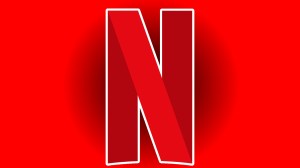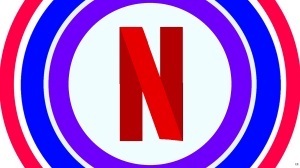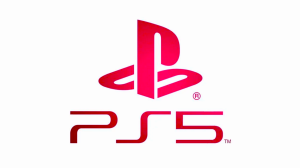Fire Power, coming from Image Comics (via writer Robert Kirkman, artists Chris Samnee and Matt Wilson, and letterer Rus Wooton) tomorrow, is a new spin on a couple of classic genre ideas. The title character is someone who is struggling with his own destiny: fated to save the world by wielding fire powers handed down through generations, Owen Johnson just wants to live a normal life and try to ignore the legacy he’s part of. But destiny has a way of catching up with you, and the book seems to be positioning Johnson’s hope to be left alone with his family as a futile one.
Videos by ComicBook.com
The end result is a graphic novel (and accompanying single-issue comic originally scheduled for Free Comic Book Day release) that, at least at face value, feels a bit like Avatar: The Last Airbender mixed with James Robinson’s Starman, as a regular person grapples with power, destiny, and responsibility. And it all starts — as so many of Kirkman’s series do — with a striking sequence just begging to be the cold open for a TV pilot or feature film. Probably TV, though, because Kirkman says that he and Samnee have no immediate plans of slowing down, and about 12 issues of Fire Power already planned out.
Kirkman joined ComicBook.com to discuss the series, from its conception to the issue you’re [this close] to holding in your hands.
Is the idea of Fire Power one that you had kicking around a bit? Is this a genre you kind of always wanted to try and explore?
Robert Kirkman: It’s something that I’ve had kicking around for a good long while, possibly ten years, but most of my comics start with an idea for a cool opening scene. So the idea of a guy walking up the snowy mountain and getting to this temple, and the guy having Air Jordans listening to a Walkman when he gets to the top — that I’ve had kicking around for a while. And then turning that into a sprawling martial arts epic, it was a vague idea, but it wasn’t until Chris Samnee came on board that it started developing into a real story. Chris is somebody that I had wanted to work with for a long time.
I’d been hounding him, as I do many artists, by email. And anytime I would see him at a convention, I tried to hassle him about doing something with me. And he would always very politely decline, because he was very busy, and then his Marvel editor would hear about it. So you get a convention, you know, flashy, a wry smile and kind of poke fun at me. “Oh, you didn’t get Chris again, did you?” But recently I guess his contract there was ending and I had remembered all those times I’d been hounding him, and he contacted me and was like, “Hey, you want to do something?” I was like, “I think I’ve got the perfect thing for us,” and started talking to him about this crazy martial arts world. And then we were able to develop it together into Fire Power.
What’s the creative process like working with Chris? Is it any different than the stuff that you did with Ryan Ottley or Charlie Adlard?
Kirkman: Chris is hounding me for scripts faster than Ottley, but not quite as fast as Adlard, so that’s the main difference. We talk on the phone from time to time, but I prefer to have the artist, to a certain extent, be the first audience. He usually knows what’s coming, and I’ve discussed the major arcs, and we talk about different characters, and I have that, “what do you like to draw?,” “what do you not like to draw?” kind of conversation with artists, and I try to tailor things for them. I’m a firm believer in the fact that the things that I want to write, that make me happy, should be the things that the artist wants to draw, that makes them happy, and that should be the thing that readers want to look at, that make them happy.
You want to make your comics as exciting and action-packed, and fun, and like give them cool splash pages to draw, and great scenes, and cool page turns. I want to be able to deliver a script to an artist that has an, “Oh s–t, that’s so effing cool. I can’t wait to draw that.” So sometimes he’s super prepared and ready for something, and then every now and then, there’ll be a script where I’m like, I don’t know, it’d be cool if this guy’s head fell off and I’ll just kind of slip that to him. So sometimes I surprise the artist, sometimes they’re like, “Oh, you finally got to this thing. Great.”
You’ve always played around with, with formats and how things get released. And so what was the impetus to, to go OGN for this one versus obviously breaking it out into issues?
Kirkman: Well, I have these retailer breakfasts at San Diego Comic-Con and New York Comic-Con, where Skybound will gather 30 – 70 different retailers into a banquet hall, or we’ll rent out a restaurant, and I like having this one-on-one dialogue, or one-on-60 dialogue, with retailers. And one of the things that came out of one of the recent ones was the free comic book day event is this amazing event that we have tons of people coming into our store for, and we have all this material that we give away for free, but it would be nice if we had something big and special to sell during this event. And so I started thinking that, okay, that would be kind of a cool thing to do for retailers, that could possibly generate a big audience.
And so I thought, there’s also this problem with new books, where it’s hard to get people invested. Fire Power sure does look cool, but if you’ve been reading 35 years of action, then you’re definitely going to be more interested in finding out what Gambit is doing this month than getting to know a new character that you’ve never heard of and get invested in their story. There’s a barrier to entry that you always have to overcome with new ideas.
And so launching with an OGN where you give someone, this book has nearly eight issues worth of material. It’s 154 pages. Giving people that on the first day of release, I think, will hopefully give somebody like, “Oh, I’m buying a whole volume. This is crazy, and I’ll know these characters so much more by the end of this.” I felt that that would be a good way to launch a series, and having it launch the week before free comic book day would give retailers an OGN to sell with the first issue of the series that is on free comic book day. It was a great plan. It was going to work out great. And then there was a global pandemic that screwed it all up.
So now, I have to do it again with another series in the future to see if it works, which is frustrating. But now we get this cool thing where on July 1st you’ll be able to go into the stores and get the OGN and then the free first issue will be there on the same day. And, you know, hopefully people will be able to walk out of the store with eight pages worth of content of an OGN that they paid $9.99 for and get a 40 page first issue for free as well. And they’ll know and love these characters, hopefully as much as they love Gambit, by the end of it.
So how far can Fire Power go? How much after the first OGN do you have in you?
Kirkman: I mean, I plan on doing this book for a good long while. I mean, Chris and I are, as I speak, wrapping up work on issue 12, so we’ve already got the first year’s worth of comics pretty much in the can. Chris is a monthly guy. We’re just going to keep going from there. It’s possible that we’re that far ahead of schedule because we’ve got some very oversized books planned, that might eat into that schedule over the course of the run of this book, and we don’t want to fall too far behind at doing that. So there could be some cool surprises available along the way. I don’t know if this book is going to go 100 issues like The Walking Dead, but I do plan on doing this for a good long while. And I mean, for God’s sakes, I’m working with Chris Samnee and Matt Wilson. Would anyone in their right mind wanting to stop doing that at any point?
So after the first OGN, it’s a monthly series?
Kirkman: The OGN is essentially volume one and then issues one through six will eventually be collected into volume two and issues seven through 12 will eventually be collected into volume three and so on and so forth until we’re at volume 100.
There is a ton of action in this book, which is a lot of fun to just, one, see Chris draw, but also see what the characters kind of get into. What are some of the things that you’ve thrown at Chris and he’s come back and just totally blew your mind with?
Kirkman: Well, I’m a huge fan of action. I love action movies. I really love writing action. I really love writing complicated action. It’s something that has frustrated me over the years just because, especially in television, there have been multiple times where I write really epic fights in The Walking Dead series and then I get to set — and the way it’s usually done in television is, for brevity’s sake, the fight choreographer comes in and is like, “okay, you want this, this, this, this and this, I think he does this, this, this, and this will look cooler and shoot faster.” And then everyone on set goes, “Cool.” And then I’m like, “but he was going to drop kick that guy and knock his head off and…aw, come on!”
So sometimes I do write overly complicated action that gets pared down or doesn’t [get shot]. And sometimes in comics, you just can’t make it work because you’re telling the story with still pictures and even the best artist is not going to be able to make it work. But yeah, with Fire Power, I was like, you know what, Chris knows what he’s doing. I’m just going to f—ing go for it, and I’m not going to hold anything back.
For instance, I had a scene where two archers fight each other with bows and arrows by shooting the same arrow back and forth at each other for multiple pages. I would possibly never attempt to make that work in a comic book because it’s very hard to describe the mechanics of how an archer would catch an arrow in a bow and a shot at them. But I called Chris on the phone and was showing him videos. It’s like, you hit the arrow at this point. And then it would knock it, spin it back. Like this isn’t necessarily how physics will work, but it’s a good enough shorthand that it will make sense. And he was like, “Yeah, yeah, I got this, don’t worry.”
And then I get previews back where it’s like, yeah, that’s totally awesome. These two archers are catching each other’s arrow and shooting the same arrow back and forth at each other for many pages. So being able to have that level of crazy-complicated action in a comic and a lot of fun. And that’s something that I don’t know that I can pull that off with anyone other than Chris Samnee.
Let’s talk a bit about what Matt Wilson brings to this book that potentially another colorist couldn’t. I mean, obviously Matt is a legend in his own right — but specifically for this book, what does he bring? What’s collaborating with him like?
Kirkman: Matt is somebody that’s been working with Chris for over a decade now, and to watch them work together and see how they play to each other’s strengths is really great. But this book in particular, there’s a wide range of environments. We’re in snow-capped mountains, we’re in ancient temples, we’re in St. Louis, Missouri, we’re on the road, we’re in restaurants, we’re in volcanoes. There are a lot of different things, and he incorporates emotion into his colors really well. Like there’s a lot of, let’s say romantic scenes, that have like a completely different palette. And we kind of blow through different moments in different settings at a pretty rapid pace. So it’s got to be pretty breakneck for a colorist to be five pages here, three pages there, six pages there, and everything is completely wildly different.
And at a certain point, colorists are going to run out of colors in the crayon box. That’s what I’m looking for. But he’s continually impressing us with just an absolute, like a crazy range of what he’s able to do. But tailor-making every color scheme for every scene is really spectacular.
Rus Wooton is a guy you’ve worked with for over a decade. What new bag of tricks is he pulling out for Fire Power?
Kirkman: We’ve been together, I would say like 15, 16 years at this point He’s who’s been lettering almost all of my books. And the greatest thing about Rus Wooton is that with each individual book, I am able to say I want to go for this kind of flavor. I want to go for this kind of style. And he builds a whole lettering style around each book.
I mean, if you look at Walking Dead, Invincible, Oblivion Song, Outcast, Fire Power, they all have a unique style. With Fire Power, especially, I was like, you know what, Chris Samnee is kind of the Alex Toth School of art. And so I had Rus kind of look at the way Alex Toth did hand lettering and try to come up with a way to approximate that in kind of a modern way. So there’s a lot of like balloon irregularity and things that make things look really organic that I think lend to a breezy read and kind of makes things flow in a really great way.
Can you share some insight between like how Rus and Chris maybe work together, given that Chris does some of his own sound effects?
Kirkman: Chris is handling his own sound effects because he likes incorporating that into the art a little bit more. And a lot of the sound effects are story dictated and if you incorporate those in the art the way that Chris does, you don’t have to draw backgrounds in some cases, so it actually is a much more efficient process. But Chris is very mindful of lettering placement. Chris will go through and he sends in these very intricate layouts for the book before he does his finished pages and they have lettering placements in those layouts. So he’s taking the script and he is making sure that the story flows in a way that the lettering will work with the art. And that’s something that’s just kind of designed from the get-go.
Not any artists that I work with, but there are artists in comics that haven’t quite grasped where lettering goes and how lettering fits on a page. And it’s a very difficult job for a letterer to come in and make the page work because oftentimes there will not be space left and the writer is like, “No, I want three balloons in this panel even though the artist didn’t leave room for three balloons,” and then the letterer just has to make that work. But luckily, on this book especially, there’s a team that’s in place that understands what the colorist needs to do his job right, and what the letterer needs to do his job right. And, you know, I think it’s all coming together in a really great way.
Fire Power is available for sale tomorrow at your local comic shop. You can find it using the Comic Shop Locator.









